Are you experiencing blurry near vision or ‘short-arm syndrome’? This common age-related vision change, known as presbyopia, can significantly impact daily tasks, but finding a solution starts with clarity. A professional eye exam for reading glasses is crucial to accurately diagnose your unique vision needs and provide tailored corrections for crisp, comfortable sight. Discover how to regain your clear near vision and explore suitable options at https://www.mozaer.com/search?q=eye%20exam%20for%20reading%20glasses.
【Decoding Presbyopia: The Age-Related Vision Shift】
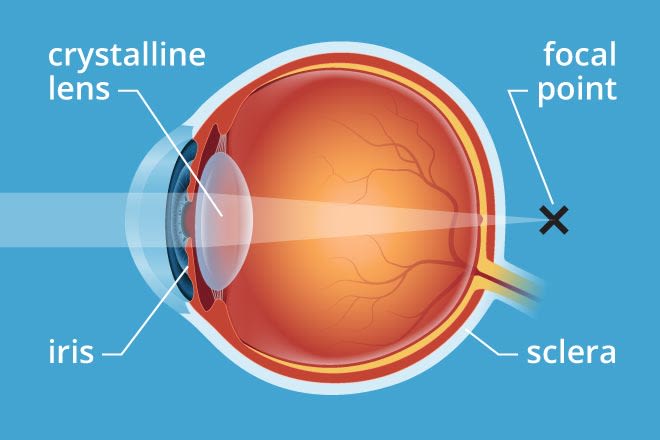
What is Presbyopia? Understanding Age-Related Vision Changes
The natural aging process of the eye
Presbyopia is a natural, unavoidable part of the eye’s aging process, often becoming noticeable in the early to mid-40s. It involves the gradual loss of the eye’s ability to focus on nearby objects. This decline typically worsens through the mid-60s, a common ocular phenomenon. The crystalline lens inside the eye stiffens and loses its elasticity, making it harder for the eye to change focus from distant to near objects. An eye exam can confirm these age-related vision changes.
Common symptoms of presbyopia
The most common indicator of presbyopia is blurry vision at a normal reading distance. Individuals often find themselves needing to hold reading material farther away to see clearly, a phenomenon sometimes referred to as “short-arm syndrome.” Other common symptoms include eye strain, fatigue, and headaches after prolonged activities requiring near focus, such as reading, using a digital device, or driving. These vision changes prompt many to seek an eye exam for reading glasses.
The Inevitable Progression of Presbyopia
Why presbyopia cannot be prevented or reversed
It’s critical to understand that presbyopia is a normal, physiological part of aging for almost everyone and, as such, cannot be prevented or reversed. Unlike other vision conditions, it’s not a disease but a natural hardening of the eye’s lens. The vision deterioration process will continue to advance naturally, regardless of whether you opt for reading glasses or other vision correction methods. An eye exam helps manage this inevitable progression.
The global impact of age-related vision changes
The widespread nature of presbyopia underscores its global impact. As of 2025, nearly two billion people worldwide are estimated to live with presbyopia, making it one of the most prevalent age-related vision changes. This figure highlights the universal need for accessible eye care and vision solutions. Furthermore, other significant age-related ocular conditions like Age-related Macular Degeneration (AMD) affect approximately 200 million individuals globally, emphasizing the broader challenge of maintaining good eyesight into older age and the importance of regular eye exams.
Understanding presbyopia and its inevitable progression is the first step towards managing its effects. If you’re experiencing any of these age-related vision changes, a professional eye exam is your most effective course of action to diagnose your condition and find the perfect reading glasses to restore your near vision. For those ready to explore their options and discover suitable solutions for clearer sight, an eye exam for reading glasses can provide the clarity you need. Learn more about finding the ideal eye exam for reading glasses to improve your vision and daily life by exploring available options: https://www.mozaer.com/search?q=eye exam for reading glasses”>eye exam for reading glasses.
【Do You Need an Eye Exam for Reading Glasses? Separating Fact from Fiction】
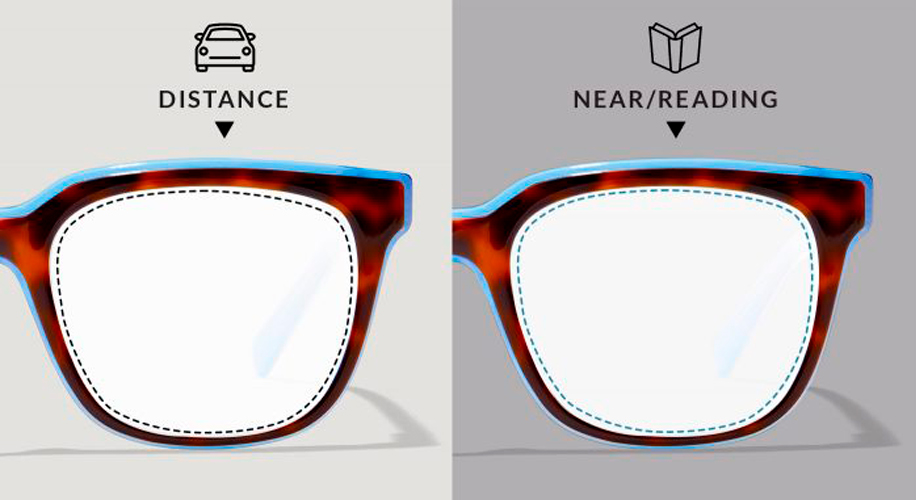
When symptoms of presbyopia appear, a common question arises: Do you need an eye exam for reading glasses? Many individuals wonder if they can simply pick up over-the-counter readers or if a professional eye examination is truly necessary. Understanding the difference between non-prescription reading glasses and a tailored prescription is crucial for maintaining optimal vision and overall eye health. This section will clarify when each option is appropriate and highlight the overarching importance of regular eye health checks as we age.
Over-the-Counter Reading Glasses vs. Prescription: A Crucial Comparison
Choosing the right type of reading glasses depends significantly on your individual vision needs and the absence or presence of other ocular conditions. While convenient, non-prescription options are not always a universal solution.
When non-prescription readers are sufficient
Over-the-counter reading glasses, also known as magnifiers or cheaters, are generally suitable for individuals who do not need prescription glasses for other vision problems like nearsightedness (myopia), farsightedness (hyperopia), or astigmatism. These ready-made readers offer uniform magnification across both lenses, making them ideal for simple age-related near vision issues. Most nonprescription reading glasses available in stores range in power from +1.00 diopter to +3.00 diopter, accommodating common levels of presbyopia. If your eyesight is otherwise healthy and your primary concern is slight blurring at reading distance, these might provide adequate temporary vision correction.
When an Eye Exams becomes essential
Despite the convenience of over-the-counter solutions, an eye exam becomes absolutely essential under several circumstances. If non-prescription reading glasses are causing new or persistent headaches, eye strain, or making your vision changes feel worse, it’s a clear sign that a professional ocular assessment is needed. Moreover, if changes in your vision begin to interfere with your ability to perform day-to-day activities, such as reading fine print, working on a computer, or even driving safely at night, a comprehensive vision test is paramount. Crucially, any sudden loss of vision, hazy or blurred vision, the appearance of flashes of light, black spots (floaters), or halos around lights are urgent symptoms that demand immediate eye care from an optometrist or ophthalmologist. These could indicate more serious underlying eye conditions beyond simple presbyopia.
To ensure you get the most appropriate eye exam for reading glasses and discover solutions perfectly tailored to your unique vision requirements, exploring professional services is highly recommended. Visiting the link can help you find reputable eye care providers and suitable reading glasses that precisely address your visual acuity and bring back clear near vision: https://www.mozaer.com/search?q=eye exam for reading glasses”>eye exam for reading glasses.
The Importance of Regular Eye Exams for Aging Eyes
Beyond just addressing presbyopia, regular eye exams are vital for monitoring overall eye health as we age. Many age-related eye diseases, such as glaucoma, cataracts, and macular degeneration, often present without obvious early symptoms, making routine vision screenings indispensable for early detection and timely vision preservation.
American Academy of Ophthalmology (AAO) recommendations for Eye Exams frequency
The American Academy of Ophthalmology (AAO) provides clear guidelines for eye exam frequency, which vary by age group and risk factors. For adults in their 20s and 30s, if they have good vision and healthy eyes with no known eye conditions, a baseline eye test every 5–10 years is generally recommended. Individuals nearing 40 years of age should ideally have a comprehensive baseline eye test or sooner if they begin experiencing any symptoms of sight loss or vision changes. For those aged 40-54, an eye examination every two to four years is advised. As eyesight naturally continues to evolve, individuals aged 55-64 should aim for vision checks every one to three years. Finally, for those aged 65 and beyond, the AAO recommends eye exams every one to two years to proactively manage age-related ocular health. Adhering to these recommendations helps maintain visual comfort and detect potential problems early.
Increased frequency for high-risk individuals
It’s critical to note that the recommended eye exam frequency increases for high-risk individuals. If you have a family history of glaucoma or other serious eye diseases, such as diabetic retinopathy or macular degeneration, your ophthalmologist or optometrist will likely advise more frequent eye examinations. Similarly, if you have additional factors that put you at higher risk for eye problems, such as systemic conditions like diabetes or high blood pressure, certain medications, or previous eye injuries, your eye care professional will tailor a more aggressive vision screening schedule. These tailored schedules are designed to proactively monitor your ocular health, ensuring any potential vision impairments are identified and addressed as early as possible in 2025.
【What to Expect During Your Eye Exam for Presbyopia】
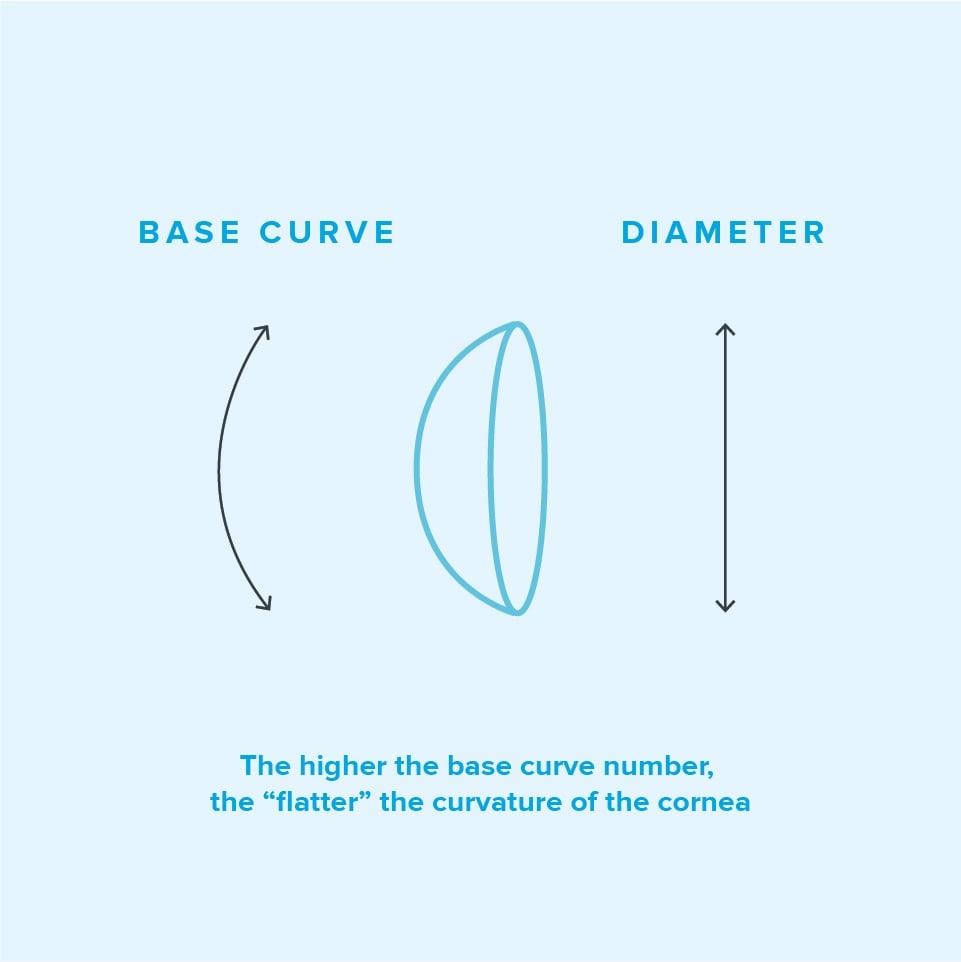
Once you’ve determined that a professional eye exam is necessary for your presbyopia and overall eye health, understanding what the vision test entails can ease any apprehension. A comprehensive eye examination is not just about determining the correct magnification for your reading glasses; it’s a thorough ocular assessment designed to evaluate the entire visual system and identify any underlying eye conditions. This detailed sight test ensures that any corrective lenses prescribed precisely address your vision needs while safeguarding your eye health for years to come.
The Comprehensive Eye Examination Process
During an eye exam for reading glasses, an optometrist or ophthalmologist will perform a series of tests to assess your visual acuity and overall eye health. This goes far beyond simply reading an eye chart. The process is designed to accurately measure your refractive errors and identify other vision problems that may be impacting your ability to see clearly, especially at near vision distances.
Key measurements for prescription accuracy
A crucial part of your eye examination involves precise measurements to ensure the prescription accuracy of any corrective lenses. An eye care professional can meticulously measure your vision prescription for both eyeglasses and contact lenses. This vision assessment includes determining your refractive error, which is how light bends as it passes through your eye. For contact lens wearers, the eye doctor will also take specific measurements of the curvature and width of the eye. These detailed ocular measurements are essential to ensure a correct and comfortable contact lens fit, preventing irritation and optimizing visual comfort when using corrective contact lenses.
Detection of refractive errors beyond Presbyopia
While presbyopia is the primary reason many adults seek reading glasses, a comprehensive eye exam is critical for the detection of refractive errors that may exist simultaneously. These include common vision problems like myopia (nearsightedness), where distant objects appear blurred; hyperopia (farsightedness), which can cause difficulty focusing on nearby objects; and astigmatism, an ocular condition where an irregularly shaped cornea or lens leads to blurred vision at all distances. Detecting these additional refractive errors is paramount because over-the-counter reading glasses only provide uniform magnification and cannot correct astigmatism or complex myopia or hyperopia, which would necessitate a tailored prescription.
Understanding Your Prescription: Eyeglasses vs. Contact Lenses
Once your eye examination is complete, your eye doctor will provide a prescription tailored to your vision needs. It’s important to understand that a prescription for eyeglasses is distinct from one for contact lenses, even if they are both intended for vision correction due to presbyopia or other refractive errors.
Why prescriptions differ for eyeglasses and contact lenses
The primary reason prescriptions differ for eyeglasses and contact lenses lies in their positioning relative to the eye. Eyeglasses sit a slight distance away from the eye, typically about 12-14 millimeters, affecting how the lenses magnify or minify objects and where the light focuses on the retina. In contrast, contact lenses sit directly on the surface of the eye, providing vision correction without that inherent space. This positional difference means the lens power required to achieve the same visual acuity will vary between the two corrective lens options. Consequently, individuals who wish to use both eyeglasses and contact lenses will require two separate and specific prescriptions to ensure optimal clear vision for each vision correction method.
Renewal requirements for different Vision Correction Options
The renewal requirements for different vision correction options also vary significantly, primarily due to factors related to eye health and safety. Contact lens wearers typically need yearly eye checks and prescription renewals. This is because contact lenses interact directly with the eye, and regular monitoring ensures proper ocular health, fit, and hygiene, preventing potential eye infections or complications. An annual vision assessment also allows the eye care professional to check for any changes in your vision or eye health that might necessitate an adjustment to your contact lens prescription. In contrast, people who wear eyeglasses may not need to renew their prescription as frequently, often every one to two years, unless they experience significant vision changes or new ocular symptoms. However, it is still advisable to adhere to your eye doctor’s recommended eye exam frequency to maintain optimal visual comfort and detect any emerging eye conditions early in 2025.
For a comprehensive range of vision solutions and to explore eyeglasses and contact lenses designed to provide clear, comfortable vision following your eye exam, visit https://www.mozaer.com/search?q=eye exam for reading glasses”>eye exam for reading glasses.
【Beyond Basic Readers: Exploring Vision Correction Options】
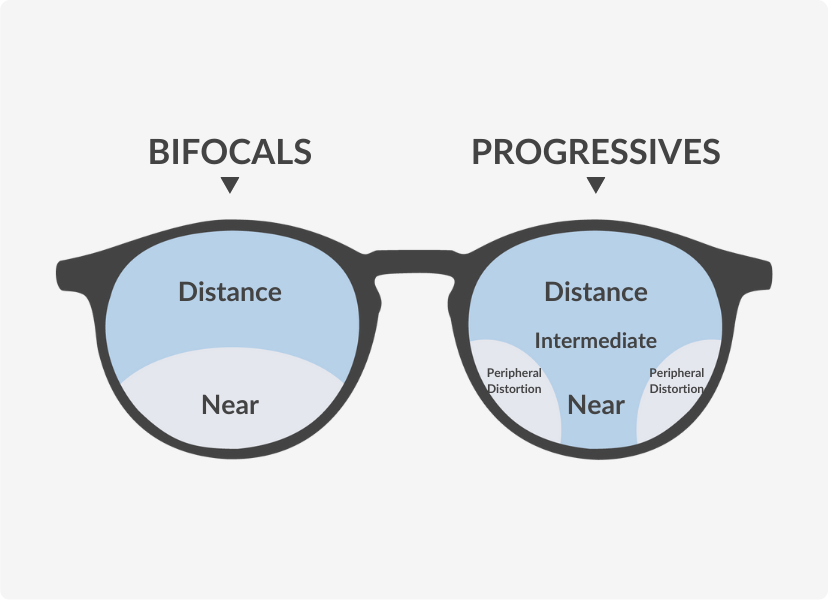
After undergoing a comprehensive eye exam and receiving your detailed prescription, the next crucial step is to explore the array of vision correction options available. While basic over-the-counter reading glasses might suffice for some, many individuals with presbyopia and other co-existing refractive errors benefit significantly from more advanced and tailored solutions. A professional eye care professional will guide you through choices that go beyond simple magnification, ensuring optimal clear vision for all your daily activities. This section delves into sophisticated eyewear and contact lens alternatives designed to meet diverse vision needs.
Progressive Lenses and Bifocals: Seamless Vision Correction
For those seeking prescription eyeglasses that offer versatility, progressive lenses and bifocals provide enhanced vision correction for multiple distances. These advanced reading glasses alternatives eliminate the need to constantly switch between different pairs of eyewear for near vision, intermediate vision, and distance vision. They are meticulously crafted to provide clear vision where you need it most.
Benefits of progressive and bifocal lenses
Both progressive lenses and bifocal lenses offer distinct advantages for individuals managing presbyopia or age-related farsightedness. Progressive lenses, also known as multifocal or varifocal lenses, provide a seamless transition between multiple focal lengths without any visible lines on the lens. This smooth change allows for clear viewing at various distances – from reading fine print (near vision) to using a computer (intermediate vision) and seeing objects far away (distance vision). According to Clark.com, progressive lenses can start at approximately $100 at Walmart Vision Center in 2025, reflecting their advanced design.
In contrast, bifocal lenses feature two distinct optical powers within one lens, separated by a visible line. The larger top segment typically corrects distance vision, while a smaller segment at the bottom is for near vision tasks like reading. While the line is visible, many users find the clear separation straightforward. Clark.com indicates that bifocal lenses start around $60 at Walmart Vision Center, making them a more budget-friendly option for two distinct optical powers. Both options significantly improve visual acuity and reduce vision fatigue compared to single-vision readers.
Customization options for modern eyewear
Modern eyewear goes far beyond just lens power to offer extensive customization options that enhance both aesthetics and visual comfort. When selecting your prescription eyeglasses for presbyopia or other refractive errors, you’ll find a wide variety of frame options, styles, and materials available to suit individual preferences and facial structures, as noted by sources like MNT and Clark.com. This allows for a truly personalized vision solution.
Beyond frames, lens coatings play a crucial role in optimizing your visual experience. Standard coatings include anti-scratch properties to protect your investment. Other popular enhancements include no-glare or anti-reflective coatings, which reduce distracting reflections and improve clarity, especially when driving at night or working under artificial light. Impact-resistant lenses, often made from polycarbonate or Trivex, provide durability and safety. Furthermore, with increased screen time, blue light filtering coatings are designed to minimize exposure to potentially harmful blue light emitted by digital devices, reducing eye strain. For those who spend time outdoors, options for lenses that darken in sunlight (transition lenses) offer convenience by adapting to changing light conditions, while built-in UV rays protection shields your eye health from harmful solar radiation (MNT, Clark.com). These customization options ensure your eyewear not only corrects vision problems but also supports your lifestyle and safeguards your eyes.
The Role of Contact Lenses in Presbyopia Management
For many individuals with presbyopia, contact lenses offer a discreet and convenient alternative vision solution to eyeglasses. These small, thin lenses sit directly on the surface of the eye, providing vision correction without affecting one’s appearance or interfering with activities. The field of contact lenses has advanced significantly, offering specialized designs for age-related vision correction, including multifocal or monovision options that allow for clear vision at multiple distances.
Pros and cons of using contact lenses for age-related Vision Correction
Choosing contact lenses for presbyopia management involves weighing several pros and cons. On the positive side, contact lenses allow for vision correction without affecting appearance, which is a significant draw for many. They are also ideal for sports and active lifestyles, as they don’t slip or fog up and provide excellent peripheral vision compared to eyeglasses. Many users find them comfortable once accustomed to them (MNT).
However, contact lenses also come with considerations. A notable concern is the risk of eye infections; MNT reports that up to 1 in 500 Trusted Source wearers may develop a serious eye infection annually. They may also irritate dry or sensitive eyes and require strict hygiene practices to minimize risks. Contact lens wearers typically require more frequent check-ups with an eye care professional to monitor ocular health and fit. In the long run, the ongoing cost of lenses and solutions can also make them more expensive than eyeglasses (MNT). Your eye doctor can help you assess if contact lenses are a suitable vision solution for your specific eye health and lifestyle.
Choosing between soft and hard lenses
When considering contact lenses for presbyopia or other refractive errors, the primary distinction lies between soft contact lenses and hard contact lenses, also known as rigid gas permeable (RGP) lenses. The vast majority of contact lens wearers, roughly 90% Trusted Source, opt for soft contact lenses due to their immediate comfort and flexibility (MNT). These lenses are made from soft, flexible plastics that allow oxygen to pass through to the cornea, making them comfortable for extended wear. They are available in various modalities, including daily disposables, bi-weekly, or monthly replacement schedules, offering different levels of convenience and hygiene.
Hard lenses, while initially less comfortable than soft lenses, often provide sharper vision, particularly for complex refractive errors. Hard lenses may be recommended for people with astigmatism or keratoconus, an ocular condition where the cornea thins and bulges into a cone shape (MNT). The rigid structure of these lenses helps to create a smooth, spherical refracting surface on the eye, which can significantly improve visual acuity for these specific vision problems. An eye care professional will conduct a thorough eye exam and vision assessment to determine which contact lens type is best suited for your vision needs, eye health, and lifestyle in 2025.
For a comprehensive selection of vision solutions, including eyeglasses with advanced progressive and bifocal lenses, and various contact lens options designed to provide clear vision after your eye exam, explore the offerings that can address your specific eye care requirements: https://www.mozaer.com/search?q=eye exam for reading glasses”>eye exam for reading glasses. Visiting this link will help you find suitable products to implement the vision correction strategies discussed, ensuring your reading glasses or contact lenses meet your visual comfort and clarity needs.
【The Future of Near Vision: Alternatives to Traditional Reading Glasses】
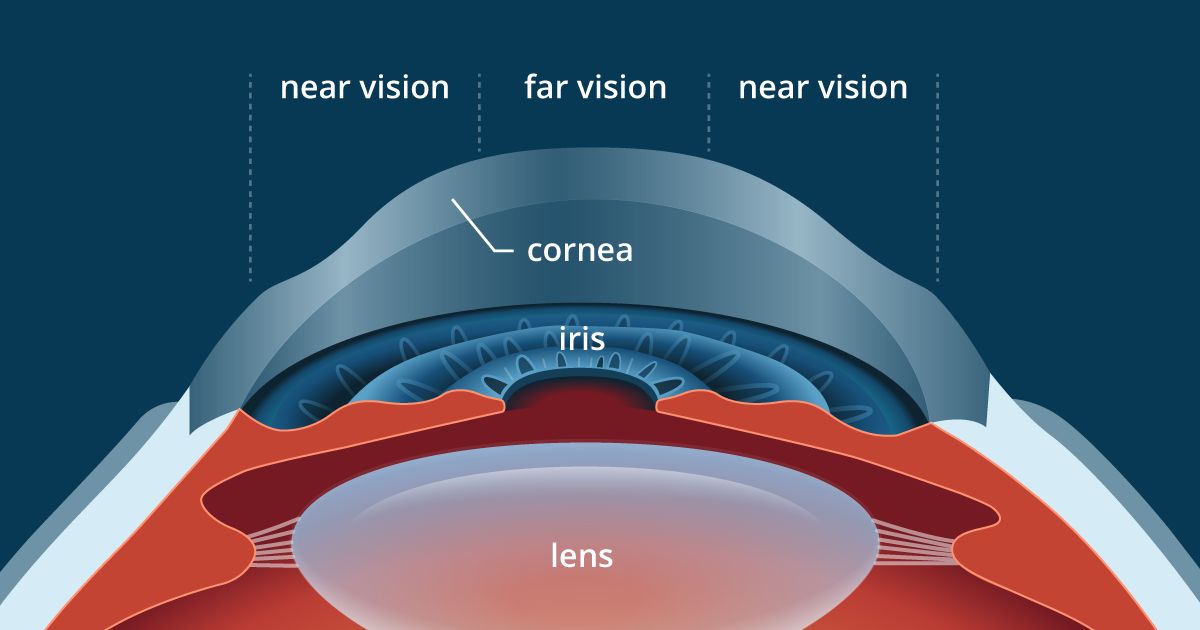
While prescription eyeglasses and contact lenses remain primary vision correction options after an eye exam for reading glasses, the landscape of presbyopia management is continually evolving. Breakthroughs in ophthalmology are introducing innovative alternatives that promise to reshape how individuals achieve clear near vision without relying on traditional reading glasses. These advanced vision solutions offer both temporary and long-term approaches to age-related farsightedness, pushing the boundaries of eye care.
Breakthrough Eye Drops: A Game Changer for Presbyopia
For individuals seeking a non-invasive near vision solution that offers convenience, eye drops represent a significant game changer in presbyopia treatment. These topical medications provide a temporary yet effective way to improve visual acuity for close-up tasks, reducing the dependency on reading spectacles.
How eye drops like Vuity and Orasis work
The mechanism behind these presbyopia eye drops centers on their active ingredient, pilocarpine. This compound works by causing the pupil to constrict, a process known as miosis. This deliberate pupil constriction creates a “pinhole effect,” which significantly increases the eye’s depth of focus. By sharpening the light rays entering the eye, objects at near distances appear clearer without altering distance vision. According to Auckland Uni and NoCamels, this ingenious optical principle allows for improved near vision performance. Vuity Eye Drops, for example, received FDA approval in late 2021, making them a prescription-only use option specifically designed for Presbyopia management (Auckland Uni).
Potential benefits and limitations of eye drops
The primary benefit of these vision improvement drops is their ability to enable clear near vision for several hours at a time, eliminating the need to constantly put on and take off reading glasses (NoCamels). This offers immense convenience for daily activities such as reading, using a smartphone, or working on a computer. They provide a discreet reading glasses alternative for active individuals. However, there are limitations to consider. A notable caution, as highlighted by Auckland Uni, involves night driving. The constricted pupils can reduce the amount of light entering the eye, potentially making night vision or driving in low-light conditions more challenging for some users. An eye care professional will discuss these aspects during your eye exam to ensure suitability.
Surgical Alternatives: Long-Term Solutions for Reading Vision
For those seeking more permanent vision correction and liberation from reading glasses or contact lenses, various surgical alternatives offer long-term solutions for improving reading vision. These ocular surgery procedures are designed to reshape the eye’s focusing power, providing lasting clarity.
LASIK for reading vision: A permanent solution
LASIK eye surgery is widely recognized as an effective and permanent alternative to wearing eyeglasses or contact lenses for various refractive errors, and it can also be adapted to improve reading vision for individuals with presbyopia. While not directly correcting presbyopia in the same way it corrects nearsightedness or farsightedness, specific LASIK techniques can create monovision, where one eye is corrected for distance vision and the other for near vision. This approach allows the brain to adapt and achieve clear vision at multiple focal lengths. MNT reports that the risks of side effects are generally low, with a high success rate; 95% of people report a good visual outcome following LASIK. However, it’s crucial to note that the procedure is not suitable for everyone, and a thorough eye exam is necessary to determine candidacy (MNT).
Phakic Intraocular Lens (PIOL) implants
Phakic Intraocular Lens (PIOL) implants represent another advanced surgical alternative for vision correction. Unlike cataract surgery where the natural lens is removed, PIOLs are soft, flexible lenses implanted straight into the eye without removing the natural lens (MNT). These implantable lenses are positioned either in front of or behind the iris. They are particularly suitable for people with astigmatism and very high glasses prescriptions who may not be ideal candidates for LASIK due to severe refractive errors or thin corneas. MNT suggests that PIOL implants may even be cheaper than the lifetime cost of wearing eyeglasses or contact lenses for some individuals, making them a potentially cost-effective vision solution over the long term.
Orthokeratology, or corneal refractive therapy
Orthokeratology, often referred to as corneal refractive therapy (CRT), offers a unique non-surgical approach to vision improvement by temporarily reshaping the cornea. This vision correction method involves wearing a rigid contact lens overnight (MNT). While sleeping, these specially designed lenses gently flatten the cornea, the clear front surface of the eye. This temporary cornea reshaping helps to improve vision across the following day without the need for eyeglasses or contact lenses. It is a temporary measure, meaning the benefits are reversible if the user stops wearing the lenses at night (MNT). Orthokeratology is commonly used for myopia control in children but can also be considered for certain presbyopia cases to reduce reading glasses dependency during the day.
For a comprehensive selection of vision solutions, including eyeglasses with advanced progressive and bifocal lenses, contact lens options, and information on how surgical and eye drop alternatives can provide clear vision after your eye exam, explore the offerings that can address your specific eye care requirements: https://www.mozaer.com/search?q=eye exam for reading glasses”>eye exam for reading glasses. Visiting this link will help you find suitable products and services to implement the vision correction strategies discussed, ensuring your reading glasses or alternative solutions meet your visual comfort and clarity needs.
【Beyond Presbyopia: How Eye Exams Safeguard Your Overall Health】
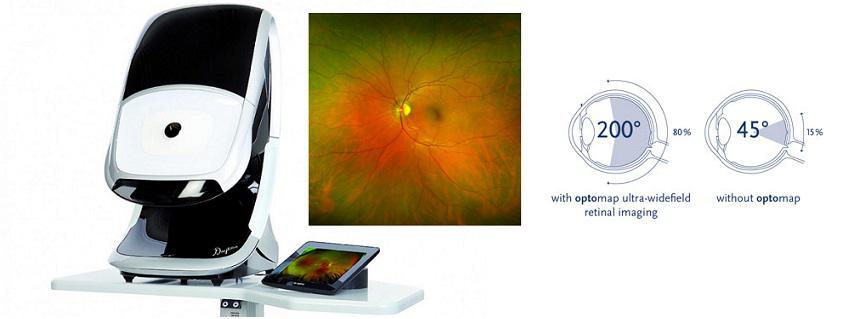
While the previous discussion centered on advanced vision solutions and alternatives to reading glasses for presbyopia, it’s crucial to understand that a comprehensive eye exam extends far beyond simply determining a prescription for clear near vision. In 2025, these ocular health assessments serve as vital diagnostic tools, offering a unique window into your overall well-being and enabling the early detection of potentially serious systemic health conditions that might otherwise go unnoticed. This holistic approach to eye care is fundamental for preventative health and long-term visual comfort.
Early Detection of Systemic Health Conditions
A routine eye examination is not merely about checking your visual acuity or updating your reading glasses prescription. It’s a powerful preventative health screening that can uncover early indicators of various systemic diseases affecting the entire body. The eye doctor or ophthalmologist can observe the intricate network of blood vessels, nerves, and tissues within your eye, providing critical clues about your internal health.
Surprising health problems an eye exam can reveal
Many people are unaware that their eyes can reveal signs of conditions unrelated to vision problems. As highlighted by MNT, regular eye exams in 2025 possess the remarkable ability to identify early signs of serious systemic health issues, including certain types of cancer, diabetes, high cholesterol, and rheumatoid arthritis. For instance, changes in the retinal blood vessels can be a significant indicator of uncontrolled hypertension or diabetes, conditions that often manifest with subtle eye changes before any other noticeable symptoms appear. Similarly, swelling of the optic nerve could point towards neurological disorders or even brain tumors, while specific patterns in eye inflammation might suggest autoimmune diseases like rheumatoid arthritis or Lupus. A thorough ocular assessment during your eye exam can therefore provide an early warning system for your general health.
The importance of vigilance for vision changes
Maintaining vigilance regarding vision changes is paramount, even if you’ve recently undergone a comprehensive eye exam. The Mayo Clinic stresses that if you become aware of any problems with your vision—such as sudden blurry vision, an increase in floaters, flashes of light, or peripheral vision loss—it’s imperative to schedule an appointment with your eye doctor as soon as possible. These visual disturbances might be indicative of a rapidly progressing eye condition or, critically, a new or worsening underlying systemic health problem. Prompt medical attention ensures that any ocular health or general health concern is addressed swiftly, potentially preventing irreversible vision loss or facilitating early treatment for a life-threatening disease. Your eye health is a mirror to your overall well-being.
Advancements in Diagnostic Eye Health Technology
The field of ophthalmology is continuously evolving, with remarkable advancements in diagnostic eye health technology enhancing the accuracy and accessibility of eye exams. These innovations are transforming how eye care professionals identify and manage various ocular conditions and systemic diseases, providing more precise and proactive vision assessment capabilities.
Eye-tracking technology for precise vision assessment
One groundbreaking development in precise vision assessment is eye-tracking technology. NoCamels reports on NovaSight's EyeSwift system, a sophisticated diagnostic tool that utilizes eye tracking to assess vision without requiring verbal input. This makes eye exams incredibly effective and suitable for all ages, particularly for children and individuals who may have communication barriers. The system’s innovative algorithms determine the patient’s level of eyesight by observing when their eyes can no longer follow a moving target. This objective measurement of visual function provides highly accurate data on visual acuity and eye movement patterns, contributing to a more comprehensive and reliable eye exam experience for determining visual needs and prescription accuracy.
Home monitoring devices for chronic eye conditions
Beyond in-clinic diagnostic tools, advancements also include home monitoring devices designed for individuals with chronic eye conditions. Notal Vision, as highlighted by NoCamels, provides daily home monitoring solutions that leverage artificial intelligence to identify the onset or reactivation of AMD (Age-related Macular Degeneration). These innovative devices empower patients to actively participate in their eye care from the comfort of their homes, providing real-time data to their eye care provider. The effectiveness of such monitoring systems is evident: studies show 81% of patients using their ForeseeHome device maintained 20/40 (or better) vision compared to 32% with routine diagnoses. This significant improvement underscores how proactive home monitoring can lead to earlier intervention and better visual outcomes, ensuring that critical changes in eye health are detected promptly, thereby preserving vision more effectively. These technological solutions complement your in-office eye exam for reading glasses and beyond.
For a comprehensive selection of vision solutions and to learn more about the latest eye care technologies that support both your reading vision needs and overall ocular health, explore offerings that can address your specific requirements: https://www.mozaer.com/search?q=eye exam for reading glasses”>eye exam for reading glasses. Visiting this link will help you find suitable products and services, including options for your eye exam, ensuring that your vision correction strategies, whether reading spectacles or advanced alternatives, are based on a thorough understanding of your eye health and systemic well-being.
Embrace Clear Vision: Your Path to Optimal Eye Health
In conclusion, understanding and proactively managing presbyopia is key to maintaining a high quality of life as we age. While this age-related vision shift is inevitable, the journey to regaining crisp, clear near vision doesn’t have to be daunting. We’ve explored how a professional eye exam for reading glasses serves as the cornerstone of effective vision correction, moving beyond the limitations of basic over-the-counter magnifiers to precisely address your unique needs. These comprehensive examinations are not merely about obtaining a prescription; they are vital for detecting co-existing refractive errors like astigmatism, ensuring prescription accuracy for both eyeglasses and contact lenses, and critically, safeguarding your overall eye and systemic health.
The article highlighted that regular eye exams are indispensable for aging eyes, as they can reveal early signs of serious ocular conditions such as glaucoma, cataracts, and macular degeneration, often before symptoms become apparent. Furthermore, the eyes offer a unique window into your broader health, capable of signaling systemic diseases like diabetes, hypertension, and even certain types of cancer. This underscores the profound importance of adhering to recommended eye exam frequencies and seeking immediate professional attention for any sudden or persistent vision changes.
Beyond traditional reading glasses, the landscape of vision correction offers an exciting array of advanced solutions. For those seeking versatile eyewear, progressive and bifocal lenses provide seamless transitions across multiple focal distances, while various contact lens options cater to diverse lifestyles and preferences. The future of near vision is also being shaped by innovative alternatives, including revolutionary eye drops like Vuity and Orasis, which temporarily improve focus, and advanced surgical procedures such as adapted LASIK, PIOL implants, and Orthokeratology, offering long-term freedom from daily eyewear. These technological advancements, coupled with precise diagnostic tools like eye-tracking technology and home monitoring devices, are continuously enhancing the accuracy and accessibility of modern eye care.
Ultimately, your journey towards optimal visual comfort and sustained eye health begins with informed decisions and proactive professional care. By embracing regular comprehensive eye exams and exploring the tailored vision solutions available, you empower yourself to navigate the world with clarity and confidence. Don’t compromise on your vision; prioritize your eye health for a clearer future. Take the proactive step to schedule your next eye examination today and discover the perfect solution for your clear near vision needs, ensuring you maintain optimal sight and overall well-being.
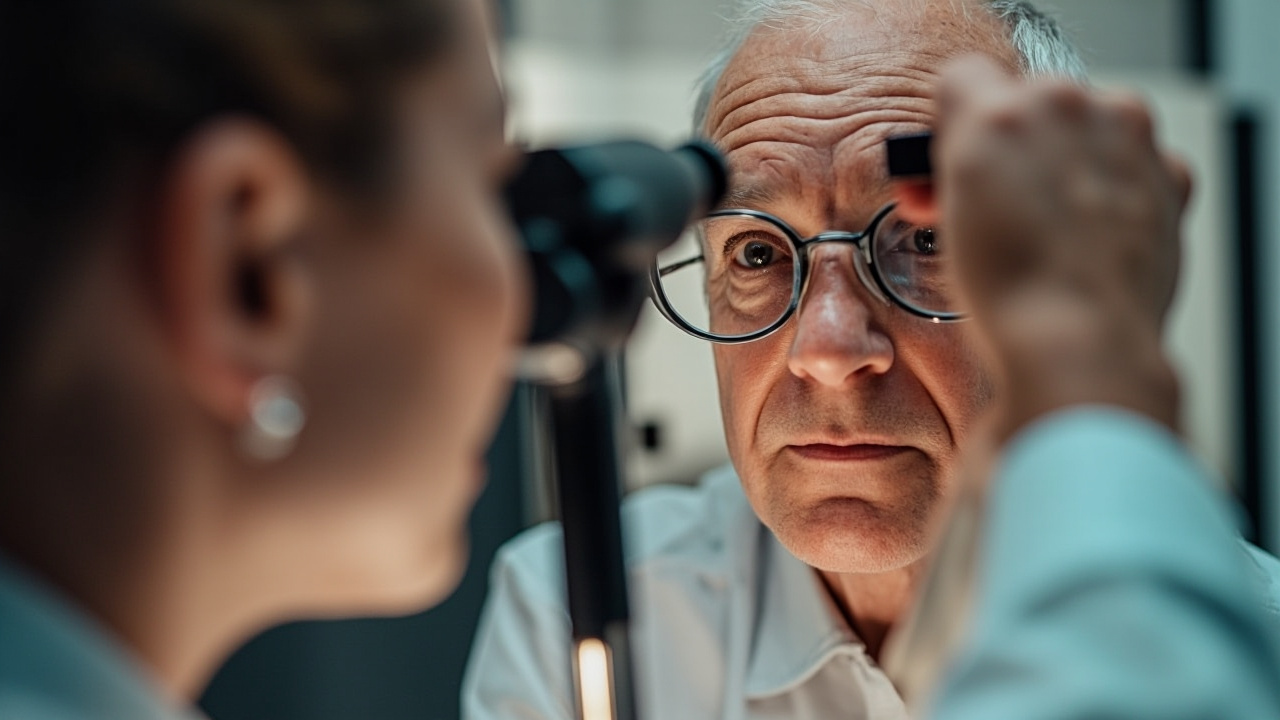
Leave a Reply